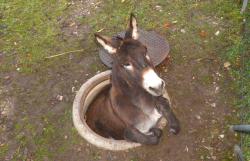Beside the Facebook, Twitter, LinkedIn and Google + channels, paleoseismicity.org now also provides a newsletter service.
By subscribing to this newsletter you will find approximately every 4 weeks a condensed overview of everything what happened on the blog, what we shared on Facebook or Google +, about our favorite Tweets and everything what happens in the world of seismology and beyond.
For subscribing just click here or enter your email address on the right and you will get a confirmation email in a few seconds. After clicking the confirmation link everything is done. more
As we are often use geodata and analyse, store them or visualize them using a GIS we depend somehow on the person on the other side to understand how a GIS functions or how to use the GIS. A webmap- like the well know google maps- is therefore an easy way to communicate your data and results. But creating a webmap is not always a funny thing to do as we are more geoscientists than programmers. QGIS2leaf for QGIS is a great plugin for creating a basic webmap. more
Vanja Kastelic and Michele M. C. Carafa (INGV, L’Aquila, Italy) recently published an article in the Bollettino di Geofisica Teorica e Applicata (an international journal of Earth sciences) entitled “Earthquake rates inferred from active faults and geodynamics: the case of the External Dinarides.” This article covers the area affected by the earthquake of Ml 4.7 (Mw 4.6) occurred on April 22, 2014.
The same authors also wrote a brief seismotectonic report dealing with such an earthquake. They share the report with us under the Creative Commons Attribution-ShareAlike 3.0 Unported License.
A quick seismotectonic report for the 22 April 2014 (Mw=4.6) earthquake in SW Slovenia
Vanja Kastelic1 and Michele M. C. Carafa1
more
During the month of March 2014, Sascha and I along with Tobi and Lauretta (BSc students from RWTH University) were in Greece for fieldwork. The fieldwork campaign started on the island of Crete; our institute at RWTH Aachen has a joint project with Mainz University to carry out paleotsunami investigations on the island. The western part of Crete was uplifted by approximately 9 m during the 21st July AD 365 earthquake and also hit by the associated tsunami. Due to the strong seismic and highly tsunamigenic activity of the nearby Hellenic Trench, it is suggested that numerous earlier tsunamis have also struck the island. more
The Royal Belgian Institute of Natural Sciences, Geological Survey of Belgium, Brussels, invites applicants for a 4-year research fellow (postdoctoral level) in coastal paleoseismology/Quaternary environmental change. Starting date: 1 June 2014.
The successful candidate will work in the framework of a 4-year research project, funded by the Belgian Science Policy Office: ‘QuakeRecNankai’ – Paleo-tsunami and earthquake records of ruptures along the Nankai Trough, offshore South-Central Japan.
more
Presidential Doctoral Research Fellowship, Dept. of Geology, Utah State University
The Department of Geology at Utah State University invites applications for a Presidential Doctoral Research Fellowship starting during the 2014-2105 academic year. This 4-year PhD fellowship will pay all tuition and a stipend of ~$20,000/year. Collaborative research will integrate fieldwork and a variety of geochemical and geo- and thermochronologic techniques to understanding processes in brittle fault zones and continental tectonics. more
Recent archaeoseismological studies have provided us with spectacular examples of skeletons as earthquake archaeological effects. Cases include the Neolithic skeletons of Tell es-Sultan, ancient Jericho (one of them beheaded by a fracture crossing the site!) published by Alfonsi et al. in SRL (2012) and the skeletons smashed by building collapse reported by Berberian et al. in JAS (2012).
To this list should now be added the case of Lajia (Guanting Basin, central China), where a team of Chinese researchers uncovered a series of skeletons buried under a thick layer of clay interpreted as the result of an enormous, earthquake-related mudflow c. 3950 cal BP. more
A new article on archaeoseismology appeared yesterday in Geoarchaeology’s Early View section. In this paper, Karabacak and colleagues present archaeoseismological evidence in the Roman stadium of ancient Kibyra (southwest Turkey). Earthquake archaeological damage includes surface faulting, systematically collapsed columns, dilated and collapsed walls, as well as rotated and displaced blocks. Their study suggests that a previously unknown seismic event (Io = VIII-IX) may have struck this region of Turkey around the 10-11 th century AD. more
Working on spatial data is the key feature of being a geoscientist and a lot of this work is done using ArcGIS from ESRI. QGIS was always an alternative especially looking at the costs of a full ESRI license. But when it comes to “making maps” QGIS was always behind ArcGIS in map formatting and export. The map composer was more or less … ugly and not state of the art. more
The collapse of Bronze Age civilizations c.1200 BC remains a persistent riddle in Eastern Mediterranean archaeology. Earthquakes, attacks of the Sea Peoples, climatic deterioration, and socio-political unrest are among the most frequently suggested causes for this phenomenon. In the last issue of Seismological Research Letters (January/February 2013), Manuel Sintubin and myself attempt to retrace the origins of the idea according to which earthquakes may have caused the demise of Late Bronze Age Eastern Mediterranean societies. The article features reproductions of unpublished archival documents held by the Cyprus American Archaeological Research Institute (Nicosia). The free-access version of the paper can be found here. Happy reading!

